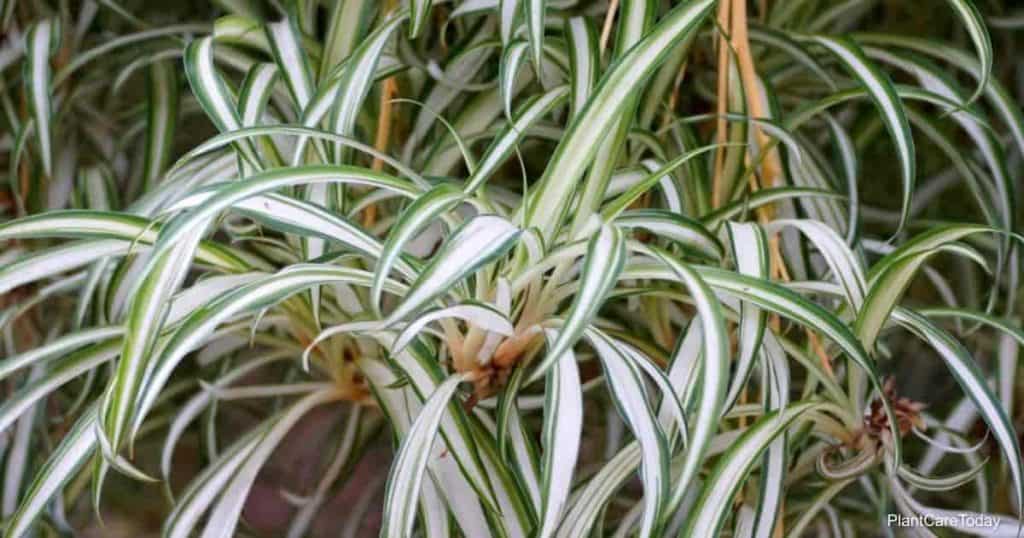No matter what your opinion is of spiders, there’s no denying spider plants (Chlorophytum comosum) are a great addition to almost any home. To those new to its care often worry over small issues. For example – do spider plants like to be root bound?
Whether it’s watering, feeding, or rooting these herbaceous perennials, it’s probably a lot easier to do than you think. These popular houseplants are fast growers who thrive on neglect and come in various shapes and colorations to fit most personal tastes.

But a rootbound spider plant does need some special attention.
What To Do With A Root Bound Spider Plant?
First of all, don’t panic. A pot bound spider plant prefers being a bit rootbound.
Second, consider if you plan to propagate and how long it’s been since the last spider plant repotting so you can take the appropriate steps.

Details on Propagating Spider Plants
A Little Root Bound Is Beneficial
While being root-bound can harm many other houseplants, the spider plant adapts to cramped spaces. It even benefits from being root-bound.
The close quarters signal that it needs to expand beyond its confines. A root-bound spider plant will begin producing better flowers and plantlets (AKA spiderlings) from the mother plant.

You can generally leave a root-bound spider plant alone, and it will be fine.
Yet, there are some reasons to consider repotting your root-bound plant as well.
When To Repot Spider Plants
Being root-bound may not be a big deal to spider plants, but it can lead to some related issues.
The most crucial reason to repot these plants is soil quality.
As the spider plant grows, it will draw the nutrients out of the soil and leave behind waste products such as salts.
Your root-bound plant may eventually face malnutrition if left in the same pot for too long.
Grower Tips:

As a general rule, you should check the plant every spring to determine if it’s outgrown the pot.
Spider plants reach mature size within 2 to 5 years, and you’ll see roots protruding from the drainage holes if it’s grown too big for its current pot.
Repotting will encourage more growth. A good rule of thumb is to use a new pot one size larger, allowing for about ¾” to 1” inch of general-purpose potting soil between the plant and the container walls.
Repotting for size is usually more of an option than a rule. Most airplane plant owners will focus more on soil transplants than plant transplants. Read How to Transplant Spider Plants.
In such cases, the purpose is to remove the spider plant, replace the old soil or potting mix with new, and return it to its original pot.
You can also do this when dividing your spider plant to help stimulate even more growth.
Dividing Root-Bound Spider Plants
By far, the best excuse for having more spider plants (or giving some to friends) is when the plant becomes root-bound.
Remove the plant and carefully separate the root ball into two to four equal sections. Plant these sections into their own pots to grow.

This a great way to solve any concerns over root binding. It’s also a great way to propagate a plant that is not currently producing spiderlings.
Best of all, if you divide an older root-bound spider plant, you can revitalize it. To answer the question – Do spider plants like to be root bound? Yes – they like having a pot full off roots.
